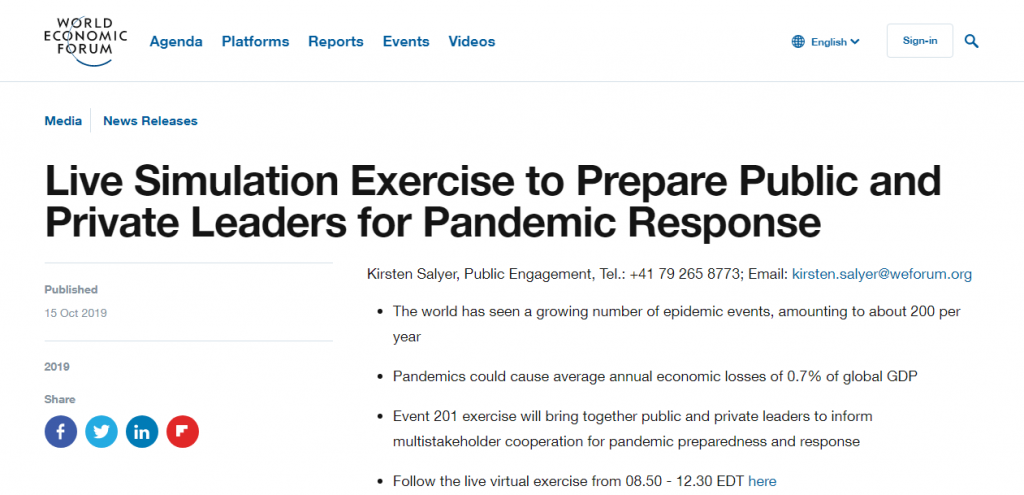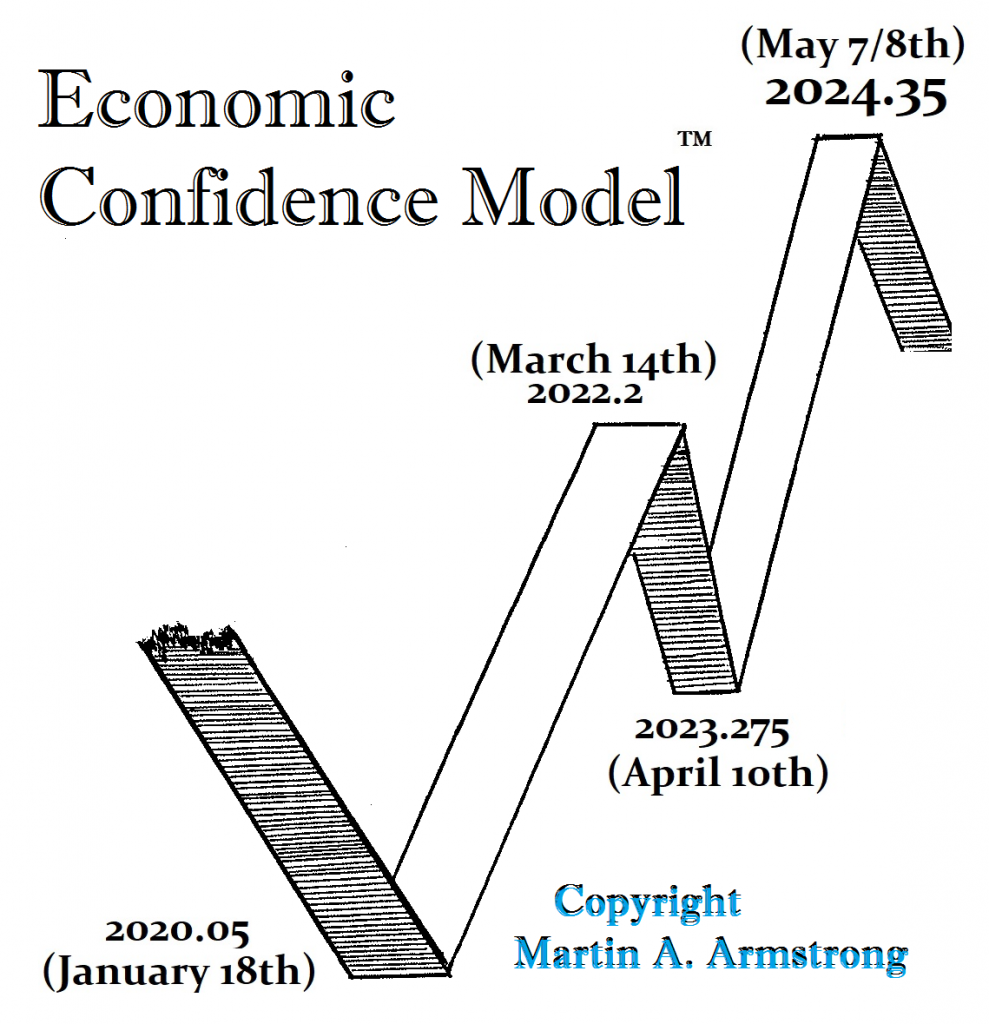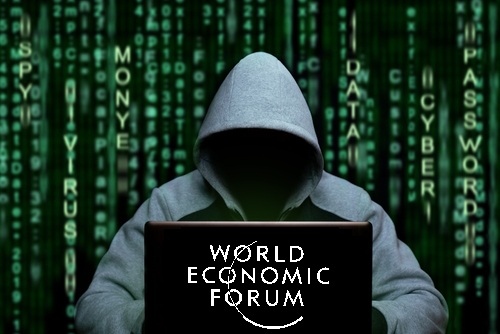
(Article republished from ArmstrongEconomics.com)
The World Economic Forum has already conducted a simulation of a cyberattack that brings the global financial system to its knees. Of course, just months before this manufactured pandemic, there too simulations were conducted on how to carry that one out. They appear to have timed their manufactured pandemic with the turn in the Economic Confidence Model. Our models have clearly shown that the crash of March 2020 was unprecedented and never before in history did such an event move that far in such a short period of time. It appears to have been a deliberate manipulation.
After years of trying to get me on board, perhaps this time they are simply realizing that they should time their events with the model to get the biggest bang for the bucks. Will they wait until next March of 2022? Or will they use our shorter-term array and target August-October? It was last November of 2020 when Schwab’s World Economic Forum teamed with the Carnegie Endowment for International Peace to put out phase II of this plan to force the world to accept his Great Reset. They co-produced a report which warned that the global financial system was now vulnerable to cyber-attacks.
It is very curious that an organization has popped up Ransomware which now claims it is disbanding after getting paid $5 million in the gas pipeline closure. This gang even threatened the release of D.C. police department records. Colonial Pipeline Paid Roughly $5 Million in Ransom to Hackers. Honestly, that was cheap. This has set the stage for precisely Schwab’s Part II. They now can claim that malware is profitable and the entire world can be held hostage. That is just now likely but this threat seems to be in the best interest of pushing the Great Reset. If COVID was clearly exaggerated and the fake models were used to shut down the world economy, these same people have a lot to gain by exaggerating this cyber threat. The question is when will they pull it off? This year of next?
Read more at: ArmstrongEconomics.com and CyberWar.news.
Please contact us for more information.

























